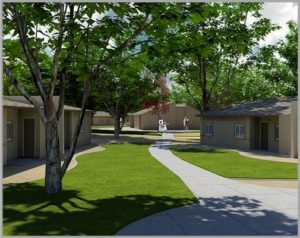Rental Assistance Demonstration (RAD)
 In response to the serious repair needs at public housing properties ($49 billion and rising), Congress enacted the Rental Assistance Demonstration (RAD) in 2011 to preserve and improve public housing buildings and other properties in need of preservation resources. In general, the RAD program enables PHAs and owners to change the type of housing assistance provided at certain properties by converting these properties to the project-based voucher (PBV) or project-based rental assistance (PBRA) programs.
In response to the serious repair needs at public housing properties ($49 billion and rising), Congress enacted the Rental Assistance Demonstration (RAD) in 2011 to preserve and improve public housing buildings and other properties in need of preservation resources. In general, the RAD program enables PHAs and owners to change the type of housing assistance provided at certain properties by converting these properties to the project-based voucher (PBV) or project-based rental assistance (PBRA) programs.
Specifically, RAD gives owners of public housing and four HUD “legacy” programs (Rental Supplement (Rent Supp), Rental Assistance Payment (RAP), Section 8 Moderate Rehabilitation (Mod Rehab), and Section 202 properties with Project Rental Assistance Contracts (PRACs)) the option to enter into long-term project-based Section 8 contracts that facilitate the financing of necessary repairs. Unlike these other housing programs, the project-based Section 8 housing program allows for more funding flexibility, including the use of other funding sources like Low-Income Housing Tax Credits, to maintain and improve existing properties.
The RAD program has two components. Under RAD Component 1, public housing units may convert to PBVs or PBRA. As of 2018, the number of Component 1 conversions is capped at 455,000 public housing units nationwide, with the converting units chosen by HUD through a competitive selection process. Under RAD Component 2, Mod Rehab, Rent Supp, RAP, and Section 202 PRAC units may convert to PBVs or PBRA. For the Component 2 conversions, there is no cap and thus no competitive selection process.
